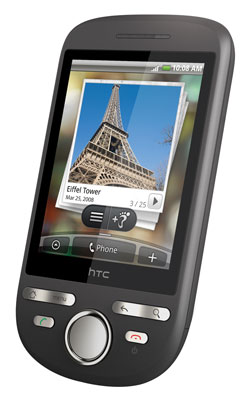 Historically, Taiwan’s HTC has focused its energies on developing Windows Mobile-based smartphones. But in the past year or so, the handset manufacturer has been two-timing Microsoft by making more and more phones that run rival Google’s Android operating system.
Historically, Taiwan’s HTC has focused its energies on developing Windows Mobile-based smartphones. But in the past year or so, the handset manufacturer has been two-timing Microsoft by making more and more phones that run rival Google’s Android operating system.
The Tattoo, its latest Android offering, is meant as an entry-level touch-screen alternative to more expensive options like the top-end HTC Hero, released in 2009.
The Tattoo, which retails for R4 599, is smaller than the R6 788 Hero and uses a resistive touch screen rather than the pricier capacitive touch screen. This means it doesn’t respond to multi-touch gestures — people used to this way of interacting with their phones will find the Tattoo’s screen frustrating.
The 2,8-inch display itself also leaves a lot to be desired. It’s not viewable at all in direct sunlight. And it’s low 240×320-pixel resolution means it’s not as crisp as higher end devices.
Another problem is the strange use of the tactile buttons at the bottom of the screen. The large circular “joystick” at the base of the phone doesn’t awaken the device from sleep when pressed. To do that, one presses the “menu button”. That’s not intuitive. And most people use the “call-end” button to return to the home screen. On the Tattoo, that switches off the display and locks the screen.
Then there’s the challenge of writing text messages on the Tattoo’s small screen. The on-screen keys are far too small, so you’ll forever be hitting backspace to correct yourself. The predictive text system is also far from great and it’s not obvious how to switch it off.
On the plus side, the Tattoo is well built. The 113g device is sturdy and feels solid in the hand despite its small size.
It runs the same HTC Sense user interface as the Hero. It has seven customisable screens that you can quickly flick through with a swipe of a finger.
Integration with Google services like Gmail, Google Talk and Google Maps is excellent, as you’d expect in an Android-powered device. Twitter integration is also superb.
The Tattoo has a solid feature set for a phone that costs relatively little (next to the Hero or the Apple iPhone, that is). There’s an assisted GPS, an accelerometer, a digital compass and Wi-Fi support. It also has an FM tuner — the audio jack is industry standard 3,5mm — and it supports 3G HSPA data.
If you really want an Android-based touch-screen phone and the Hero is just too expensive, then give the Tattoo some consideration. But we’d recommend saving up the extra two grand to get the Hero instead. It’s worth stumping up the extra cash for the Hero’s superior screen. — Duncan McLeod, TechCentral
- Subscribe to our free daily newsletter
- Follow us on Twitter or on Facebook




